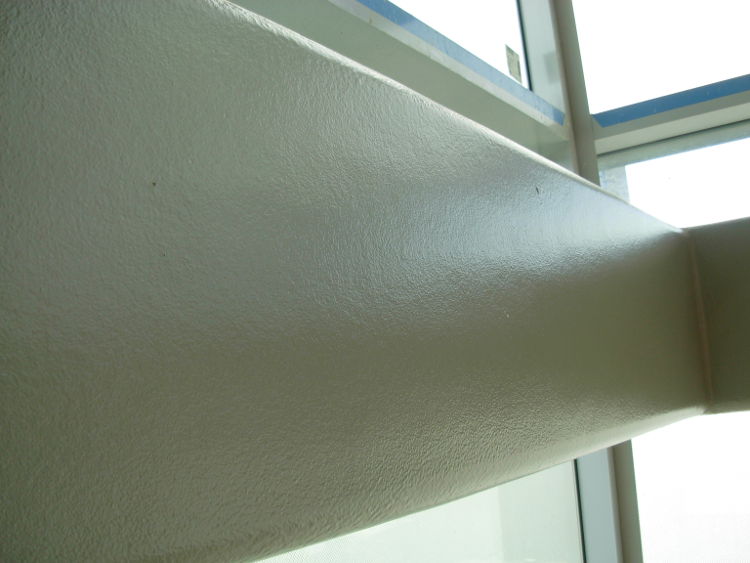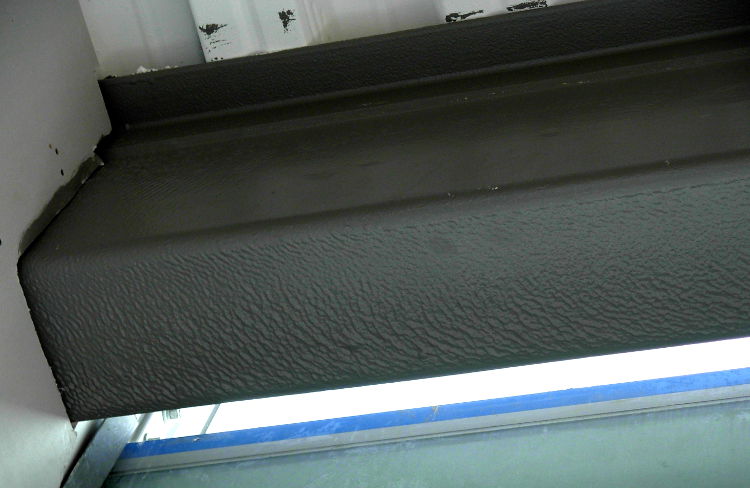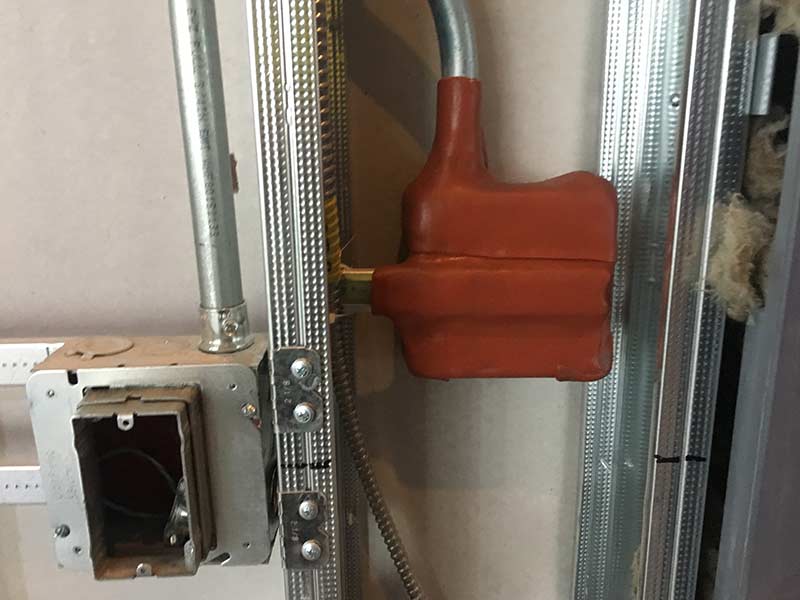Intumescent coatings, often referred to as intumescent paint, are used in buildings as a passive fire resistance measure. They can be applied to structural members as an aesthetically pleasing fireproofing product. Another type of intumescent product is a firestopping pillow or putty that is used to protect openings from fire.
The key feature of intumescents is that they expand significantly when exposed to high temperatures, such as those found in a fire. Some intumescent products can expand to more than 100-times the original thickness. As the product expands it becomes much less dense, which makes it act as in insulator that keeps the high temperatures away from structural members or protected openings.
Code Issues and Proper Listings
In the United States, both the International Building Codes (IBC) and the Life Safety Code (NFPA 101) provide criteria for proper fire protection and penetration firestopping. It is critical that architects understand the requirements when determining where protection is needed and when selecting the type of protection to be used. In addition, many jurisdictions have special requirements that go beyond the IBC and NFPA. Even some insurance companies have specific requirements. ***Please refer to local codes or seek advice from a code consultant before using any of the information in the article.
All fireproofing and firestopping systems must be tested and must have the proper listing. A UL label is usually required for fire protection assemblies in the United States. For penetration fire-stopping and joint protections, the installer will usually provide a signed and dated label on the wall next to the penetration. Fireproofing of structural members is usually accompanied by certificates and reports of the installation for the owner to keep on file. A properly trained and certified installer must be used for these products.
How Intumescent Products Work
Intumescent products are made of a series of chemicals suspended in a binder. When the binder is exposed to heat it begins to soften, which allows the suspended chemicals to the heat. The chemicals begin to react, which releases vapors that create a foam. A carbonization occurs and the foam solidifies into a black insulating material that is often referred to as char.
The video below shows how the intumescent paint expands to provide protection from heat. It is important to note that the product is not burning. Instead, a chemical reaction is taking place that builds up an insulating material that protects the underlying material from the heat.
Intumescent Paints for Structural Fire Protection
The most common use for intumescent paint in architecture is to provide an aesthetically pleasing finish on exposed structural steel members.
Typical spray applied fireproofing provides a thick and spongey surface that requires a finished surround to hide and protect the steel member. Intumescent paint provides the same level of protection in a coating that looks like a thin layer of paint.
The paint product is applied to the steel in layers as needed to generate the thickness that corresponds to the level of protection mandated by the building code. A final layer of intumescent paint is mixed with pigments that provide the desired finish color for the steel.
Intumescent coatings are also being used on structural members made of wood. For wood, the protection is not as much about the heat, but more about stopping the spread of flame and smoke. A coating can be applied to provide a rating on the wood member, but only if a painted look is acceptable. If a natural wood look is preferred, intumescent coatings are not a good choice.
Problems with Intumescent Coatings
Architects need to be aware of two common pitfalls with intumescent paints.
First, the finish is not perfectly smooth – rather, a slight orange-peel effect is achieved. This is very similar to the roller knap finish that you get on wall board. However, some architects are disappointed with the final finish because they expect to see a smooth finish that looks like the perfectly smooth steel.
If you are unhappy with the orange peel look, you can require a smoother finish in the specifications for the intumescent coating. The fireproofing contractor is able to sand the finish prior to the decorative coat to achieve a smoother finish, but this is somewhat costly due to the additional labor required. Since the acceptable level of smoothness is subjective, we suggest requiring a mock-up in the specification and asking the contractor to provide an allowance for sanding — this will allow the owner and contractor to be protected by establishing the level of finish up front.

Another common problem with intumescent coatings is that they can sag when excessive layers are used. This is sometimes a problem on the underside of steel members if the coating is applied too thick. It is important that multiple thin coats are applied to prevent this from happening. The photo below shows an intumescent installation where the paint is sagging at the underside of the beam. Unfortunately, sanding will not be able to solve significant sagging and the installation may have to be redone.

Intumescent Firestopping Putty Products
Intumescent products come in a few other forms besides paint. One common form is putty. Intumescent firestop putty is used as a through-penetration firestopping, which protects the space around pipes, cables, and other penetrations.
A hole is sometimes cut in a fire rated wall to allow pipes or cables to pass through. In order to maintain the rating at the hole, an intumescent putty material can be packed into the space around the pipe or cable, filling the hole and protecting the integrity of the rated barrier. In the event of a fire, the putty will expand and prevent the heat, flames, and smoke from passing.
Another similar product is an intumescent putty pad. These pads are thin sheets of putty that can be used to wrap a back-box or other non-rated item. There are code stipulations that only allow a certain amount of penetrations within a defined area of a fire barrier. Sometimes too many outlets or devices are required in the partition. Intumescent putty pads can be used to surround the back side of each outlet or device, thus providing a continuous barrier.

Intumescent Firestopping Pillows
Intumescent firestop pillows are another common product. Most often, they are used in at data rooms because they can be packed, unpacked, and repacked as new cables are installed. The pillows are made from an insulation material like mineral fiber or mineral wool, which is then wrapped with an intumescent coating. The intumescent brick is then placed in a sealed plastic bag. It is important that the pillows be installed by a trained installer because calculations are required for achieving the proper fire resistance.
Due to the susceptibility for intumescent pillows to be installed incorrectly, many manufacturers have developed their own products that incorporate intumescent materials. For instance there are now cable pass-through devices that have retractable doors; the doors allow opening and closing by non-trained users, but the device still maintains its fire rating. There are also various pipe collars and gaskets that incorporate intumescent components.


